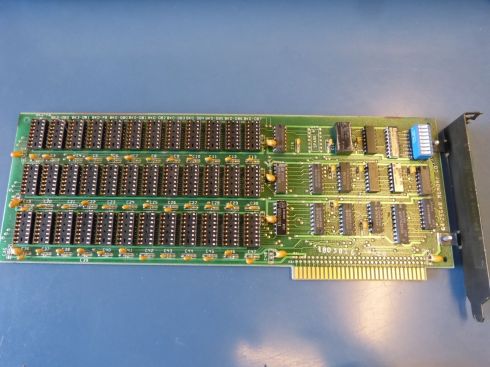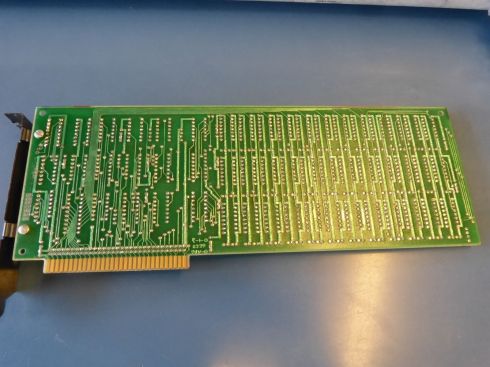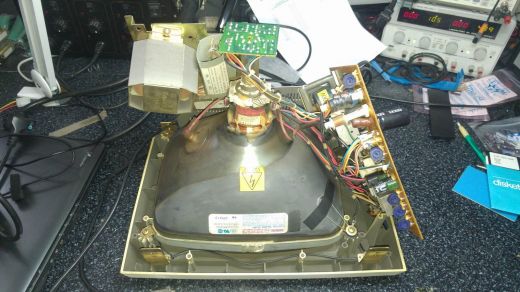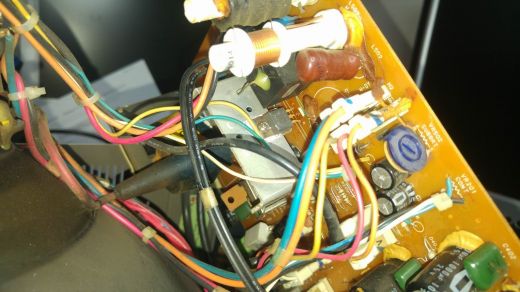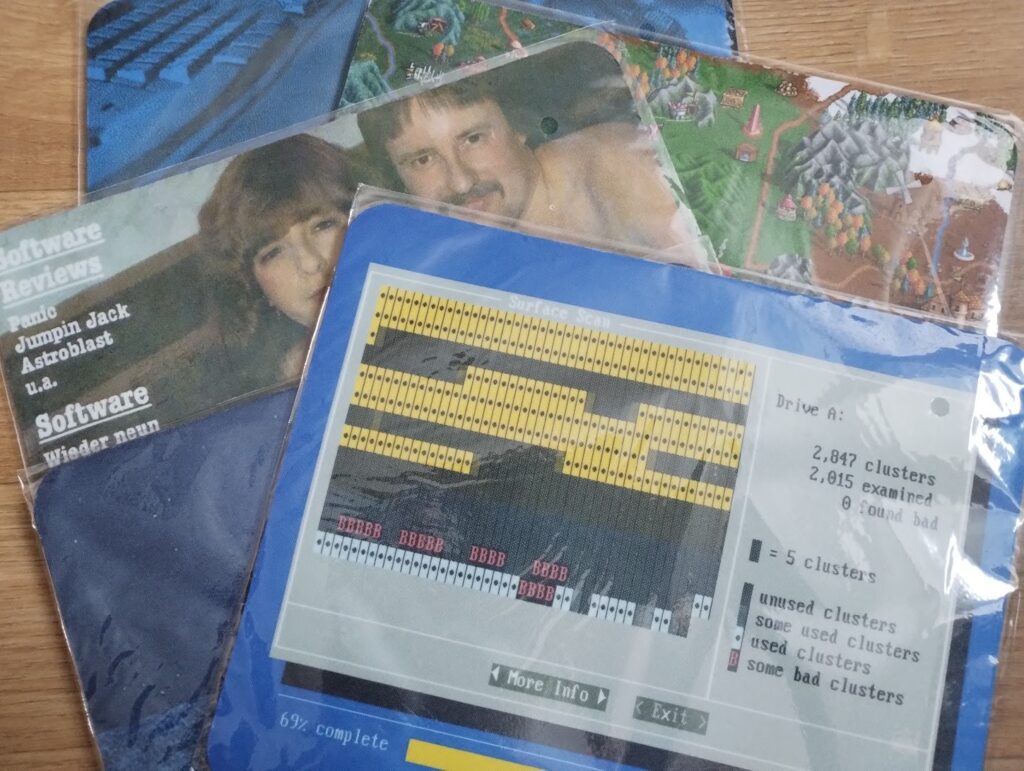IBM Personal Computer 5150
Narazil jsem na velmi zajímavé i celkem důležité info k monitoru IBM 5151, o jeho zapojení i vysoké citlivosti na správný vstupní signál - tak dávám k dobru, ať si ty krasavce s nevhodnou kartou neodpálíme :
An IBM 5151 mono monitor can be quickly destroyed by plugging it into the wrong video card.
A few years ago I read an old usenet post (1999 maybe?) that called the 5151 "the fragile one".
It seems that just about all clone mono monitors use the horizontal sync signal just to
synchronize a horizontal oscillator stage which then feeds the horizontal output stage. The
oscillator circuit always maintains the right frequency. If you feed in the wrong frequency,
you'll get an unviewable mess of scrambled, jumpy lines but it won't kill the monitor.
IBM, to make the 5151 as affordable as possible, eliminated the horizontal oscillator stage and
fed the sync signal right into the amplifying circuits.
The problem is, the whole horizontal output stage that the signal is being fed into ia a tuned
circuit that works at only one frequency, like a tuning fork. It's efficient at that one
frequency only. If you try to drive it at another (meaning the wrong) frequency, it will draw a
lot of power trying to accomplish that, and burn itself out.
The output of the horizontal stage not only drives the components that move the beam across the
screen horizontally, but also the high voltage to produce an image on the screen. When the
horizontal output fails, the high voltage does too. Result: no screen image and a hefty repair
charge.
The horizontal sync frequencies of a CGA card and a mono card are different. A mono monitor/card
uses the frequency of 18,432 hz. A CGA monitor/card is the same as a standard TV, 15,750 hz.
A VGA card is 31,500 hz. EGA varies depending on the resolution (21,850 at 640x350-16 colors;
18,432 at 720x350-4 colors; 15,750 at 640x200-16 colors)
zdroj : http://www.vintage-computer.com/vcforum/showthread.php?7829-Monitor-fried-via-computer
Sany napsal(a)
Narazil jsem na velmi zajímavé i celkem důležité info k monitoru IBM 5151, o jeho zapojení i vysoké citlivosti na správný vstupní signál - tak dávám k dobru, ať si ty krasavce s nevhodnou kartou neodpálíme :An IBM 5151 mono monitor can be quickly destroyed by plugging it into the wrong video card.
A few years ago I read an old usenet post (1999 maybe?) that called the 5151 "the fragile one".
It seems that just about all clone mono monitors use the horizontal sync signal just to
synchronize a horizontal oscillator stage which then feeds the horizontal output stage. The
oscillator circuit always maintains the right frequency. If you feed in the wrong frequency,
you'll get an unviewable mess of scrambled, jumpy lines but it won't kill the monitor.IBM, to make the 5151 as affordable as possible, eliminated the horizontal oscillator stage and
fed the sync signal right into the amplifying circuits.The problem is, the whole horizontal output stage that the signal is being fed into ia a tuned
circuit that works at only one frequency, like a tuning fork. It's efficient at that one
frequency only. If you try to drive it at another (meaning the wrong) frequency, it will draw a
lot of power trying to accomplish that, and burn itself out.The output of the horizontal stage not only drives the components that move the beam across the
screen horizontally, but also the high voltage to produce an image on the screen. When the
horizontal output fails, the high voltage does too. Result: no screen image and a hefty repair
charge.The horizontal sync frequencies of a CGA card and a mono card are different. A mono monitor/card
uses the frequency of 18,432 hz. A CGA monitor/card is the same as a standard TV, 15,750 hz.A VGA card is 31,500 hz. EGA varies depending on the resolution (21,850 at 640x350-16 colors;
18,432 at 720x350-4 colors; 15,750 at 640x200-16 colors)
zdroj : http://www.vintage-computer.com/vcforum/showthread.php?7829-Monitor-fried-via-computer
Tak je jasne ze by som to nebol ja, keby neskusim pripojit 5151 na CGA kartu :) Raz som to skusil monitor divne piskal tak som to okamzite odpojil, nastastie to prezil a odvtedy som to radsej nechal tak :)
Tak tos měl kliku, dobrá zpráva :) Pokud ale (v případě připojení CGA) monitor nenaběhne, tak doufejme že to krátkodobé zapojení snad monitor příliš neohrozí. A dlouhodobě připojené by to takto nechal asi jen retro-masochista :)
Větší nebezpečí bych ovšem viděl v normálním funkčním provozu monitoru na nějakém vylepšeném Hercules adaptéru, který by nabízel nějaké rozšířené grafické režimy a rozlišení - jiné než zná původní IBM MDA karta. Monitor sice asi bude šlapat, otázka je jak dlouho...
Sany napsal(a)
Narazil jsem na velmi zajímavé i celkem důležité info k monitoru IBM 5151, o jeho zapojení i vysoké citlivosti na správný vstupní signál - tak dávám k dobru, ať si ty krasavce s nevhodnou kartou neodpálíme :An IBM 5151 mono monitor can be quickly destroyed by plugging it into the wrong video card.
A few years ago I read an old usenet post (1999 maybe?) that called the 5151 "the fragile one".
It seems that just about all clone mono monitors use the horizontal sync signal just to
synchronize a horizontal oscillator stage which then feeds the horizontal output stage. The
oscillator circuit always maintains the right frequency. If you feed in the wrong frequency,
you'll get an unviewable mess of scrambled, jumpy lines but it won't kill the monitor.IBM, to make the 5151 as affordable as possible, eliminated the horizontal oscillator stage and
fed the sync signal right into the amplifying circuits.The problem is, the whole horizontal output stage that the signal is being fed into ia a tuned
circuit that works at only one frequency, like a tuning fork. It's efficient at that one
frequency only. If you try to drive it at another (meaning the wrong) frequency, it will draw a
lot of power trying to accomplish that, and burn itself out.The output of the horizontal stage not only drives the components that move the beam across the
screen horizontally, but also the high voltage to produce an image on the screen. When the
horizontal output fails, the high voltage does too. Result: no screen image and a hefty repair
charge.The horizontal sync frequencies of a CGA card and a mono card are different. A mono monitor/card
uses the frequency of 18,432 hz. A CGA monitor/card is the same as a standard TV, 15,750 hz.A VGA card is 31,500 hz. EGA varies depending on the resolution (21,850 at 640x350-16 colors;
18,432 at 720x350-4 colors; 15,750 at 640x200-16 colors)
zdroj : http://www.vintage-computer.com/vcforum/showthread.php?7829-Monitor-fried-via-computer
Tento problém som riešil a oprava bola jednoduchá bol vadný jeden tranzistor. On ten monitor je veľmi jednoduchej konštrukcie.
Nejvíce uživatelů online: 351
Právě online:
17 Host(é)
Právě prohlíží tuto stránku:
2 Host(é)
Statistiky uživatelů:
Hosté: 14
Členové: 715
Moderátoři: 0
Administrátoři: 1
Statistiky fóra:
Skupiny: 5
Fóra: 24
Témata: 1441
Příspěvky: 24066
Nejnovější uživatelé:
Jaroslav Šembera, Michalzchvostoskoku, gjames, Martin Janočko, jakub crhák, retro, Vince Howerton, Standa, Libertarian771, Mastafos77, sleepingmouse, Fleet, SirKoki, awlo, Jiří DobrýAdministrátoři: Sledge: 5657

 Přihlásit se
Přihlásit se


